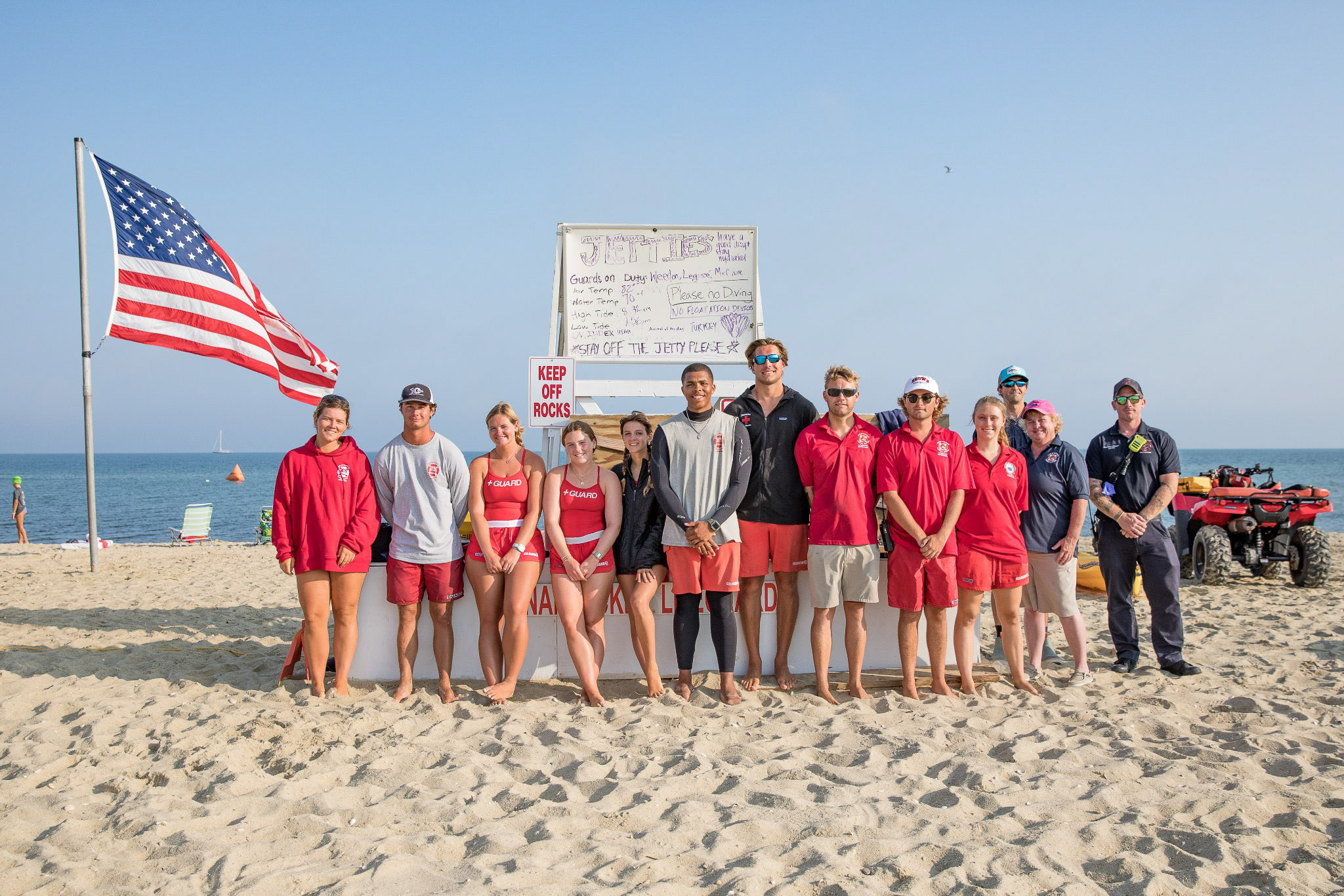Whether visiting Nantucket or living here year-round, water safety is an important issue that everyone should be knowledgeable about. We’ve gathered top tips and essential information to help ensure that you and your family have the best time on and around our beautiful shores.

Seven Water Safety Tips for Nantucket
1- If you see someone in distress at the beach, call 911.
2- Take note of the beach location number in case of emergency.
3- North shore beaches are considered more family-friendly, as they tend to have calmer and more shallow waters.
4- South shore beaches experience big swells and rip tides and are for more experienced swimmers.
5- Bring your family to one of the nine beaches equipped with lifeguard response if you are concerned about water safety and swim directly in front of the lifeguard stand.
6- Offshore wind can create dangerous conditions for unassuming swimmers or those floating on beach toys or stand-up paddle boards.
7- If you get stuck in a rip current or flash rip, stay calm and do not fight the current. Instead, wait for it to bring you out, and then swim sideways back ashore on the other side of the current.
North Shore vs. South Shore
There is a distinct difference between the beaches on the north shore and the south shore of Nantucket Island. Beaches on the north shore are characterized by calm waves and sandbars that are often fully exposed at low tide and are generally much tamer beaches that are perfect for younger kids. South shore beaches are known for bigger waves, deeper water, rip currents, and surfers. Younger children can come to the south shore, but it’s advised to be cautious of the water conditions and always keep an eye on the people you came to the beach with.
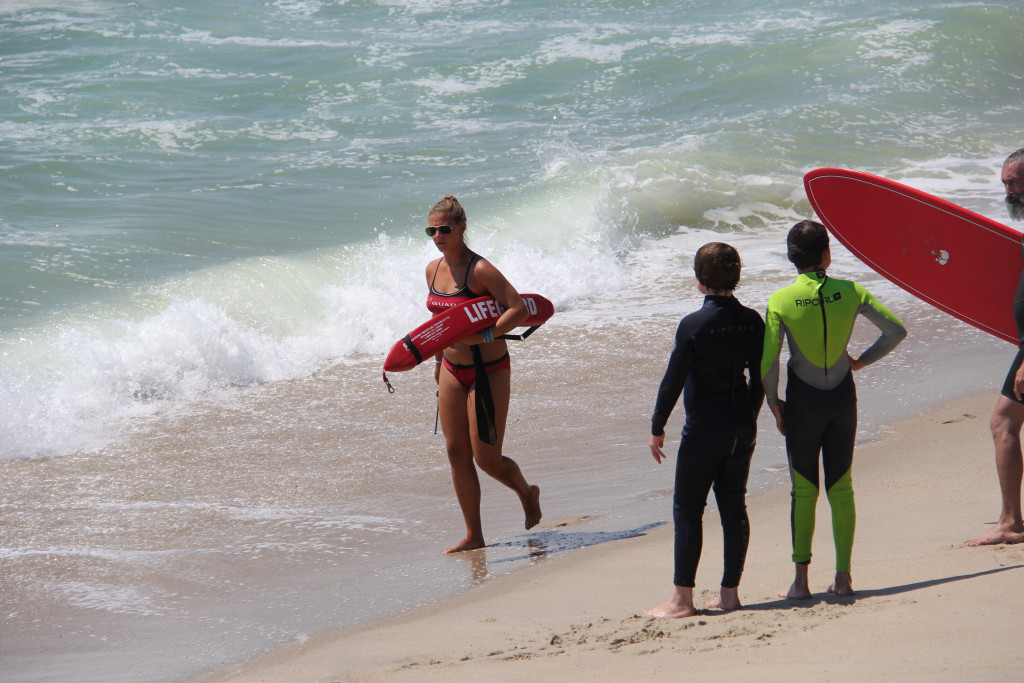
For an added layer of safety, visit one of the nine beaches with lifeguards. Visit Dionis, Jetties, or Children’s Beach for a guarded beach on the north shore. If you’re looking for a south shore adventure, Nobadeer, Surfside, Miacomet, Cisco, and Madaket are the guarded beaches to check out. If it’s the eastern shore you seek, ‘Sconset features one beach with a lifeguard stand. For up-to-date reports on the conditions at these beaches, visit the Harbor Master’s Twitter account.
Rip Currents
Rip currents are a top concern for lifeguards and public safety officials every summer. When the waves around the island swell, a rip current can develop. It usually develops in big surf conditions because of the large volumes of water being pushed to and from the shore. After a wave meets the coast, that water rushes back to the ocean via paths of least resistance. This can become extremely dangerous because channels can form and create a drop-off where one can lose their footing and be drawn into a fast-moving current. The best thing you can do if you ever feel yourself being sucked away from the beach and out to the ocean is to stay calm. You don’t want to try and swim directly back towards the beach because you’ll most likely tire yourself out from fighting against the current. Instead, as strange as it seems, you want to let the rip current take you away from the beach and start swimming sideways. Once you’re well away from the area where the rip brought you out, you can begin to swim back to the shore. You may find it helpful to utilize the waves to help conserve some energy as you paddle back. While rip currents can happen anywhere in the water, these conditions are typically found at the ends of the island and at south shore beaches.
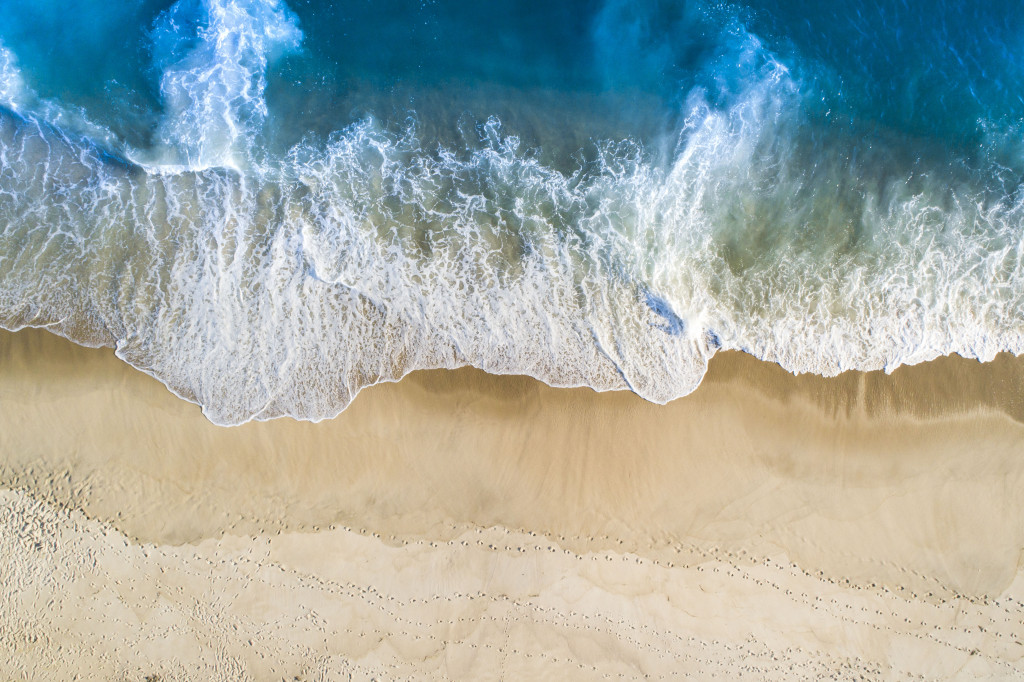
Digging Holes
Another universal lifeguard worry, regardless of which beach you’re at, is the presence of deep holes. While it often seems like a fun activity to dig as deep as possible on the beach, it can become hazardous if not done correctly. In general, deep holes are a danger to the ATVs roaming the beaches and to unassuming beachgoers. However, the biggest concern with holes being dug on beaches is the possibility of them caving in on someone. To prevent this from happening, it’s recommended that people don’t dig holes deeper than knee height. It’s also a good rule of thumb to know that if you are digging a hole, the deeper it becomes, the wider it must be dug so that it has less likelihood of caving in. If you decide to dig a hole at the beach, be sure to fill it back up before you leave to prevent injuries or accidents.
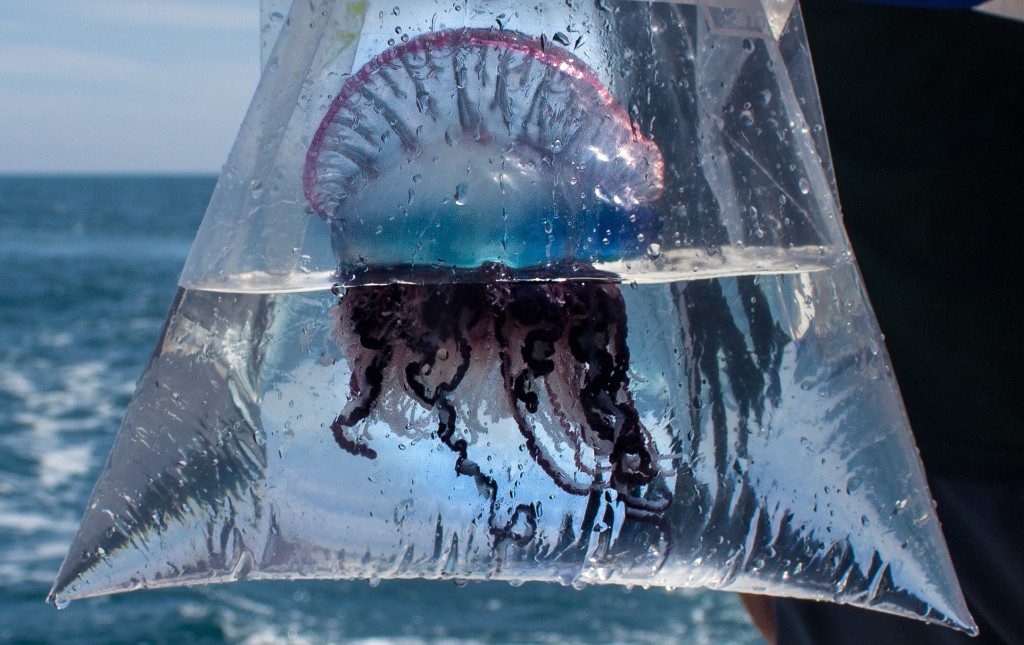
Jellyfish
Come August on Nantucket, one of the constant concerns for many beachgoers and lifeguards are the jellyfish. The two main jellyfish around Nantucket are the Portuguese man o’ war and the lion’s mane jellyfish. The man o’ war is the cause for the biggest concern, as the stings from this jellyfish are extremely painful and can sometimes require medical attention. You can recognize a man o’ war from its distinct blueish purple balloon-like float that stays above the water. A lion’s mane jellyfish is characterized by a pinkish color, with the main stinger surrounded by smaller tentacles connected to a circle-shaped body. The lion’s mane sting is far less painful than the Man O’ War sting, and usually, symptoms do not last as long. For both stings, the best thing you can do is rinse the area with seawater, not freshwater, to help remove any leftover tentacles. You can do numerous things from there, such as putting vinegar on the sting (but not if it was from a man o’ war) or placing an ice pack on it. At guarded beaches, you can ask for some hydrocortisone cream, which may help relieve some discomfort. When you get stung, your primary concern should be monitoring your body for signs of an allergic reaction. Look for severe itching, persistent red welts, nausea, etc., and if you think you may be having an allergic reaction, you should seek medical help immediately.
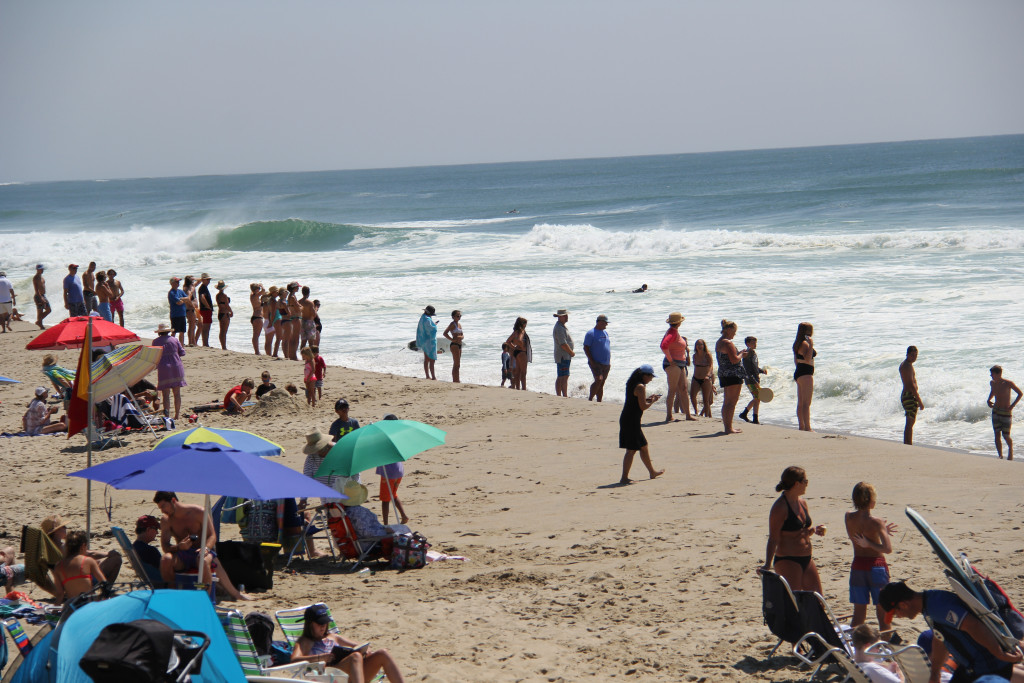
Offshore Wind
Nantucket is a very windy place and often experiences some fierce offshore winds that can create dangerous conditions for unassuming swimmers on floating beach toys. Therefore, when you go to the beach, the best way to prevent yourself from being blown far out on any sort of inflatable is to take note of the direction and intensity of the wind. If you believe it might be blowing in a way that could take you offshore, you should proceed with caution.
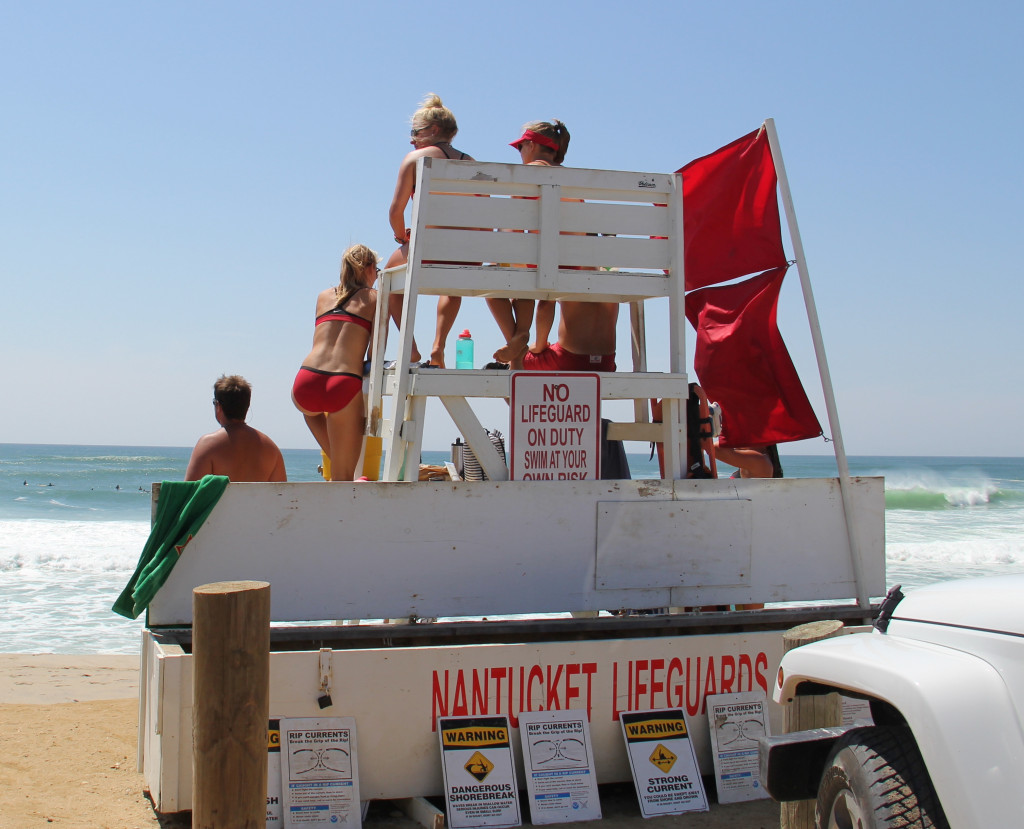
Lifeguard Schedule
The town has 50+ lifeguards on staff every summer; approximately 10 of those guards are more experienced and assigned the role of a head guard. Each guard works five days a week, allowing a schedule to be formed so that the beaches are guarded every day from the end of June until Labor Day. Guards routinely report to Surfside beach at 8:45 AM for their “morning muster,” where they check in, run a morning workout, and perform a medical review. They are then sent to their assigned beaches, where they must call their supervisors and be at the guard stand by 10 AM. Guards at beaches on stands will work until 5 PM, while guards on ATVs roam the beach until 5:45 PM. Every day, a group of 3-5 selected guards are “on call” until 7:30 PM, along with the head guards, who are always on call until 7:30 PM.

